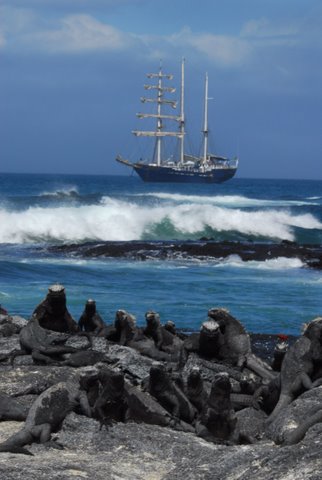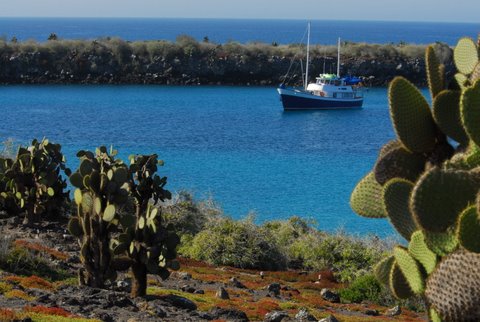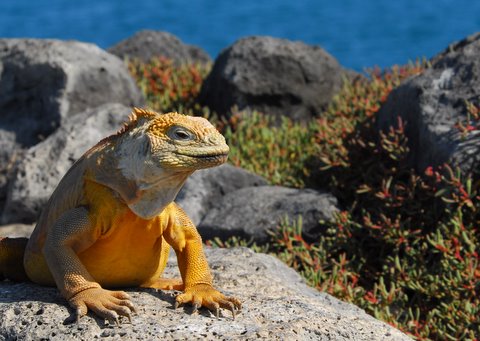Ecuador - Galapagos Islands - "The most barren and desolate place I have ever visited"

Marine Iguanas, Galapapagos Islands
When Captain George Vancouver visited the Galapagos Islands in 1795 with the HMS Discovery and HMS Chatham he described the Galapagos Islands as follows:
"The most dreary barren and desolate country I have ever beheld... and nothing but large cinder without any sign of verdure or vegetation".
That though was not my experience, nor was it the experience of likely the most important person to ever have visited the Galapagos Islands, the British Naturalist, Charles Darwin.

Lava Beds, Galapagos Islands
I can’t recall when it was that I first heard or read about the Galapagos Islands. It may have been on one of the many documentary nature shows that I watched as a kid. Perhaps it was on “The Undersea World of Jacques Cousteau”, or perhaps “Mutual of Omaha’s Wild Kingdom” with Marlon Perkins. Although I may not remember exactly when or where it was that I first heard about the islands I certainly remember reading a lot more about them in my ecology and evolution courses as a biology student at Simon Fraser University.
From Quito, the capital of Ecuador, I took a flight out to the islands to board a very small vessel, “The Samba”, where I joined a dozen or so other natural history buffs for a week long visit to some of the archipelago’s 13 islands. If you want to visit the Galapagos there are dozens of boats to choose from. You can spend many thousands of dollars for a five star experience or a fraction of that on one of the many ‘budget’ style boats (which are still not cheap). Another option is to stay on land in a hotel and do a series of day trips to some of the islands. I originally planned on doing a land-based trip but plans changed suddenly and so I ended up joining the Samba for my visit.
The Galapagos Islands were first visited by pirates and buccaneers in the 1500s and 1600s but they were made famous by the Darwin, who visited the islands in 1835, on his famous world voyage aboard the HMS Beagle. Darwin’s voyage was a long one (5 years) during which he visited regions of Africa, the South Pacific and South America collecting thousands of geological samples and fossils as well as plant and animal specimens en route. Luckily for Darwin the majority of his time was spent on land (about two thirds or so) as he was one of the unlucky ones who suffered horribly from seasickness.
The time Darwin actually spent on the Galapagos was just a very small part of his expedition around the world. But what Darwin saw on the islands, approximately 1000 kilometres (600 miles) off the west coast of South America, triggered and inspired one of the most controversial, and important, books to science, “The Origin of Species”. It is in this book that Darwin proposes the theory of evolution by natural selection. For a number of reasons Darwin did not publish this book until 24 years after visiting the Galapagos Islands.
I can’t imagine what must have first gone through Darwin’s mind when he visited the islands in 1835. George Vancouver saw barren desolation and yet the islands would have been virtually the same in 1835 as they were for Vancouver in the late 1700s. I think what impresses me the most about Darwin were his amazing skills or powers of observation. He certainly saw the black, volcanic landscape that Vancouver saw, but he also observed and noted that the species of wildlife on the islands were somehow different, somewhat unique.
It was the wildlife on the Galapagos Islands, those same unique species of birds, reptiles and mammals that inspired Darwin so many years ago that I was in the Galapagos to see.


 Funded by TEK
Funded by TEK